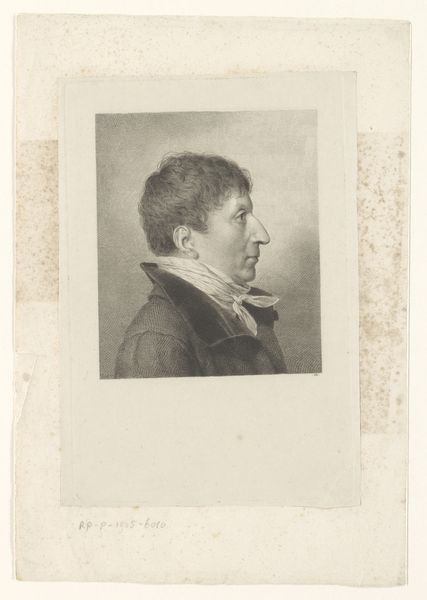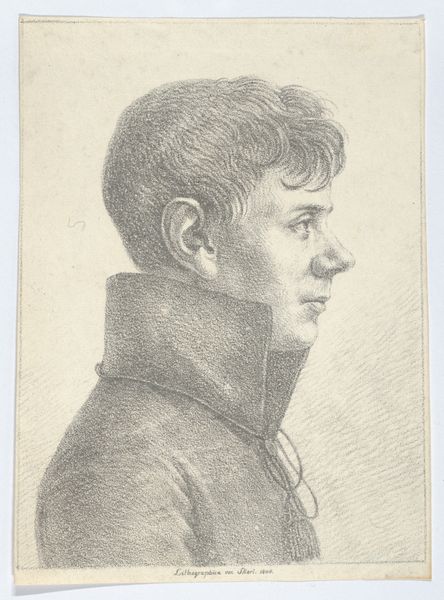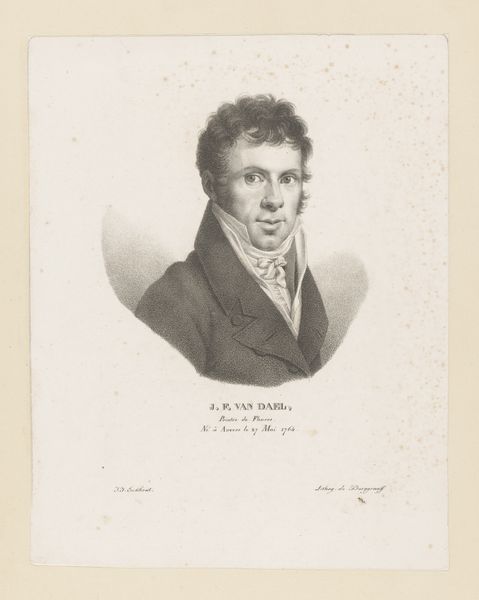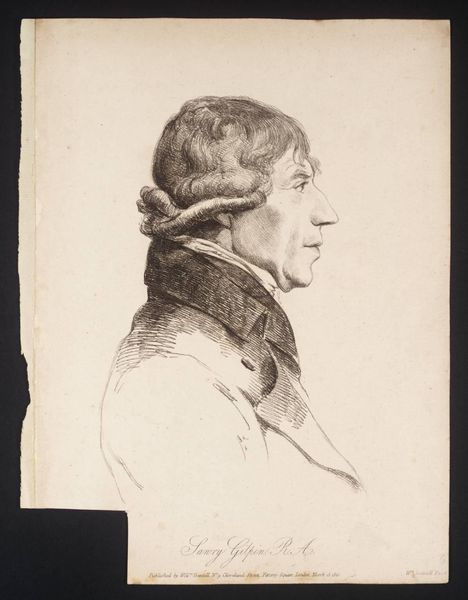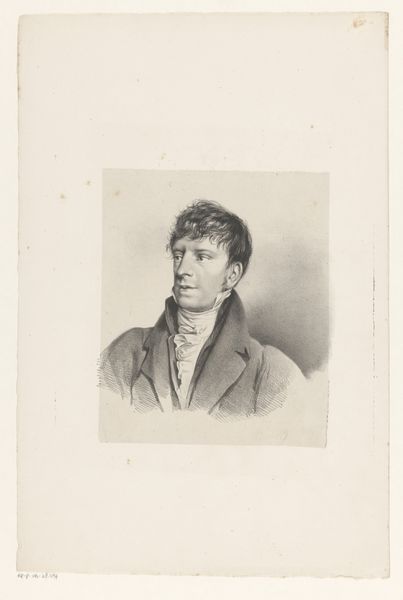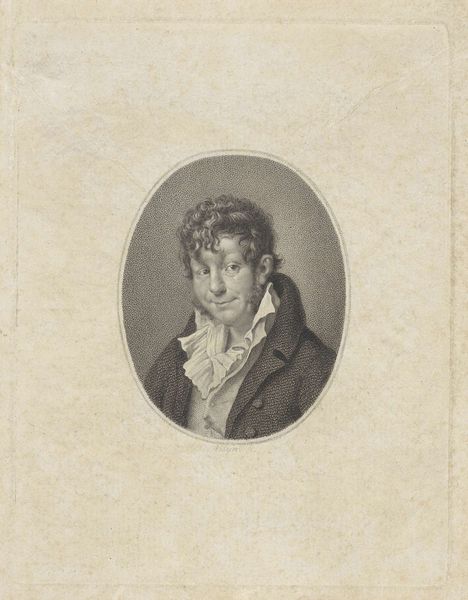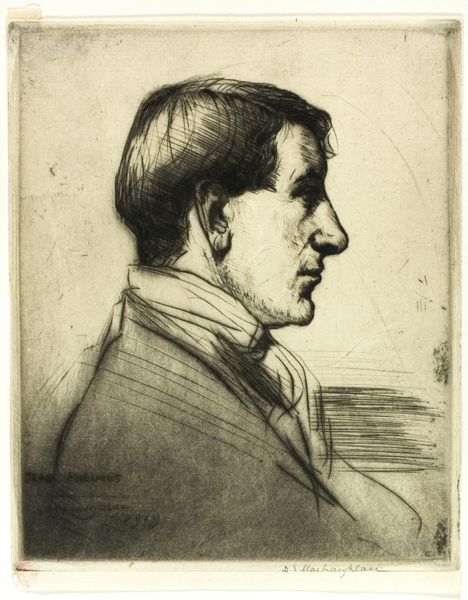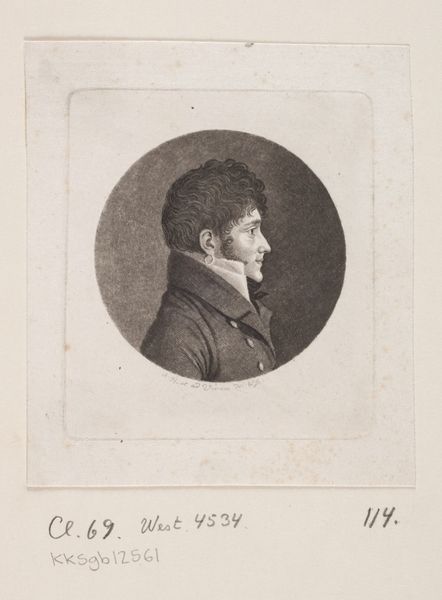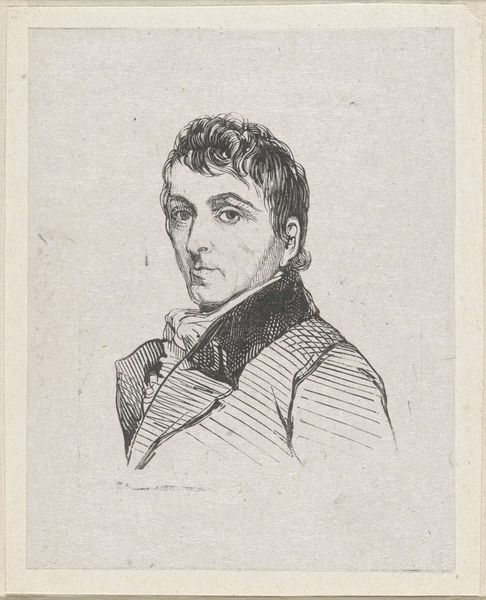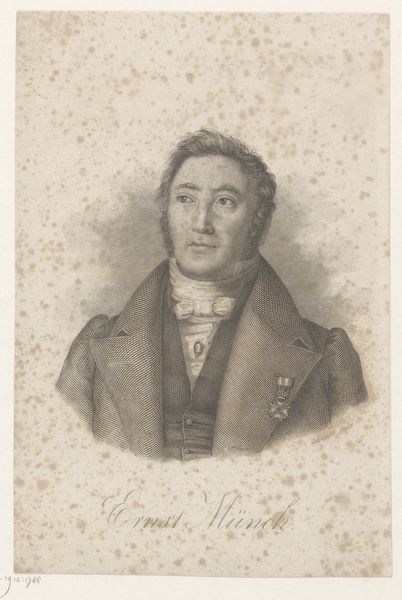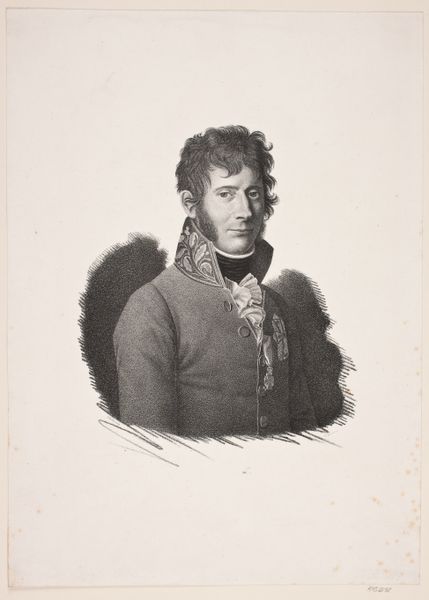
Jean-Victor Moreau 1803 - 1811
0:00
0:00
drawing, pencil
#
portrait
#
drawing
#
neoclacissism
#
portrait image
#
portrait
#
portrait reference
#
pencil
#
france
#
men
#
likeness
#
portrait drawing
#
facial study
#
facial portrait
#
portrait art
#
fine art portrait
#
profile
#
digital portrait
Dimensions: 23 3/8 x 17 1/2 in. (59.4 x 44.5 cm)
Copyright: Public Domain
Charles Balthazar Julien Févret de Saint-Mémin created this portrait of Jean-Victor Moreau using graphite and crayon on paper. It captures the likeness of a prominent French general, but beyond individual identity, this image speaks volumes about the politics of imagery and the social conditions that shape artistic production. Made in an era defined by the rise and fall of revolutionary figures, it’s a study in how portraits served as tools for constructing and disseminating public personas. The sharp profile and meticulous details are visual codes that associate Moreau with power and authority. Saint-Mémin's work prompts us to reflect on the public role of art during times of political upheaval. Was it designed to promote the subject, or to subtly critique him? Understanding this work requires us to explore archives and historical records to uncover the intentions that lie behind its creation. It's the historian's role to decode these social and institutional contexts, reminding us that art’s meaning is always contingent on its time.
Comments
No comments
Be the first to comment and join the conversation on the ultimate creative platform.

